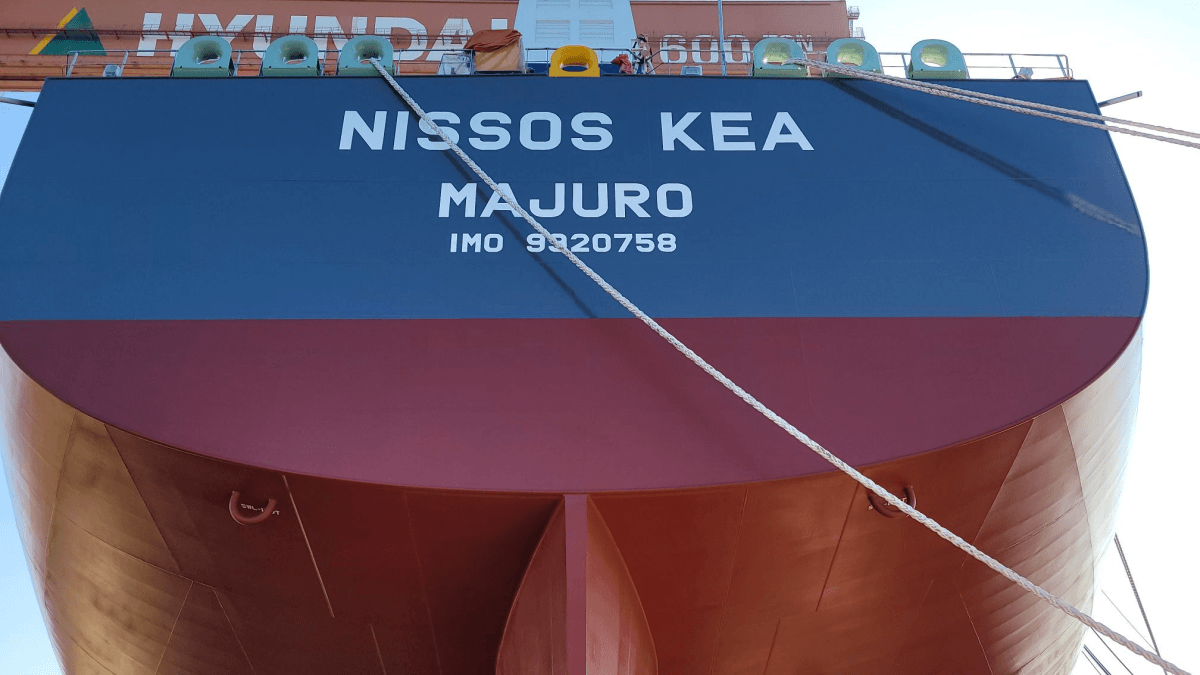Both crew and the tanker are safe and in international waters after “drone-driven explosions” forced the VLCC to flee Yemeni waters
Greece-based Okeanis Eco Tankers’ (OET) VLCC Nissos Keahas left the port of Ash Shihr in Yemen after being “in close proximity” to explosions.
“There were two drone-driven explosions,” OET said in an update posted to the Oslo Stock Exchange. “Neither explosion impacted the vessel. All crew are safe and unharmed.”
The vessel was reportedly undertaking loading operations at the Yemeni offshore oil terminal 21 October when it came under fire from the drones. The report from OET did not speculate on the origin of the drones nor whether the vessel was specifically targeted.
“There was no damage to the vessel and no pollution,” OET said, noting the vessel’s captain sailed the VLCC into international waters.
“All necessary precautionary measures were duly taken beforehand and during the incident. The relevant authorities have been kept closely informed, as required. The company is satisfied its health and safety protocols, which are well-designed to deal with such circumstances, were appropriately applied to ensure the safety of our vessel and our crew in a timely manner,” OET said.
OET’s Nissos Kea was delivered to the company at the end of March 2022 as the first of two contracted for construction at Hyundai Heavy Industries in South Korea. The vessels are “gas-ready, ECO-design, open-loop scrubber-fitted 300,000-dwt” VLCCs the company acquired in a sale and purchase manoeuvre that saw it shed two 2019-built VLCCs for US$180M to “an unaffiliated third party” which, according to brokers, was John Fredriksen’s tanker company Frontline.
OET purchased the two new VLCCs for US$194M from entities controlled by OET’s chairman and chief executive Ioannis Alafouzos.
The company said the vessels are designed to operate on gas fuels, including biofuel,” and to be retrofitted to consume lower carbon fuels such as LNG or methanol once the required technology, bunkering infrastructure and regulatory framework is in place”. The VLCCs are compliant with EEDI Phase II requirements and are fitted with a low-pressure selective catalytic reduction system for NOx compliance.
An eight-year civil war in Yemen saw a brief, six-month ceasefire that held until this month, when various warring factions failed to extend the truce.
According to the century-old nonpartisan America-headquartered think tank the Council on Foreign Relations, the war has displaced some 4M Yemenis and spawned a humanitarian crisis that is “among the worst in the world, due to widespread hunger, disease and attacks on civilians”.
The war grew out of divisions between North and South Yemen, which were unified in 1990, but has turned into a proxy war, with Iran backing a rebel coalition that overthrew the Yemeni Government that is backed by Saudi Arabia and others, with other interests and combatants complicating the picture.
In October 2020, a tanker was loading crude oil at the Bir Ali single-point mooring buoy in Yemen when an explosion occurred alongside the vessel.
The explosion was blamed on suspicious objects that were seen drifting toward the tanker, reportedly suspected to be floating IEDs, which have been found elsewhere in the region. No group or faction in the Yemeni civil war claimed responsibility.






